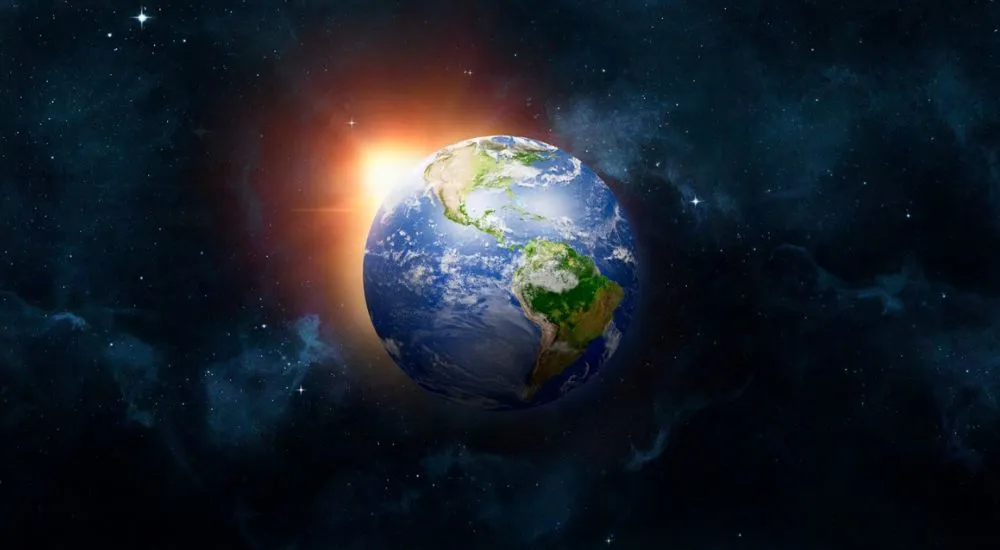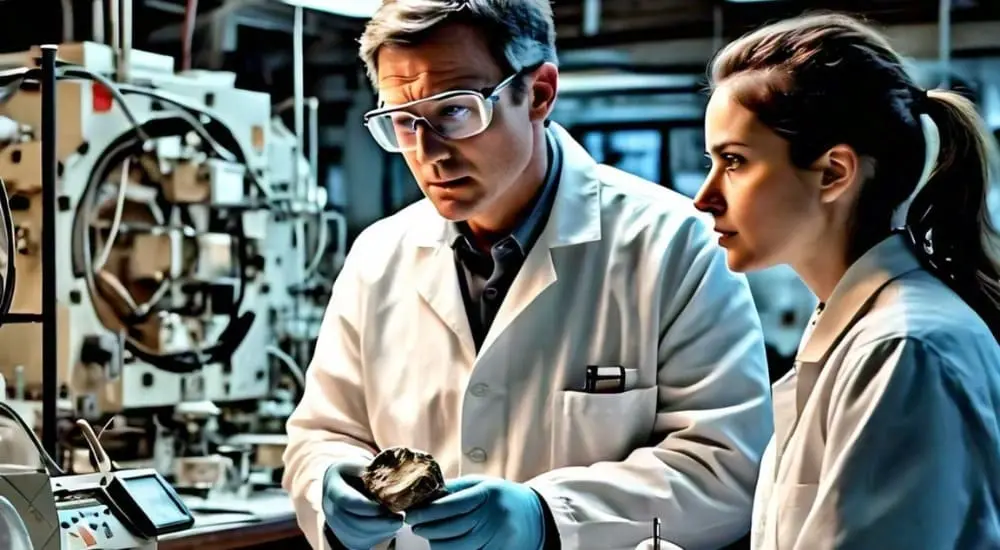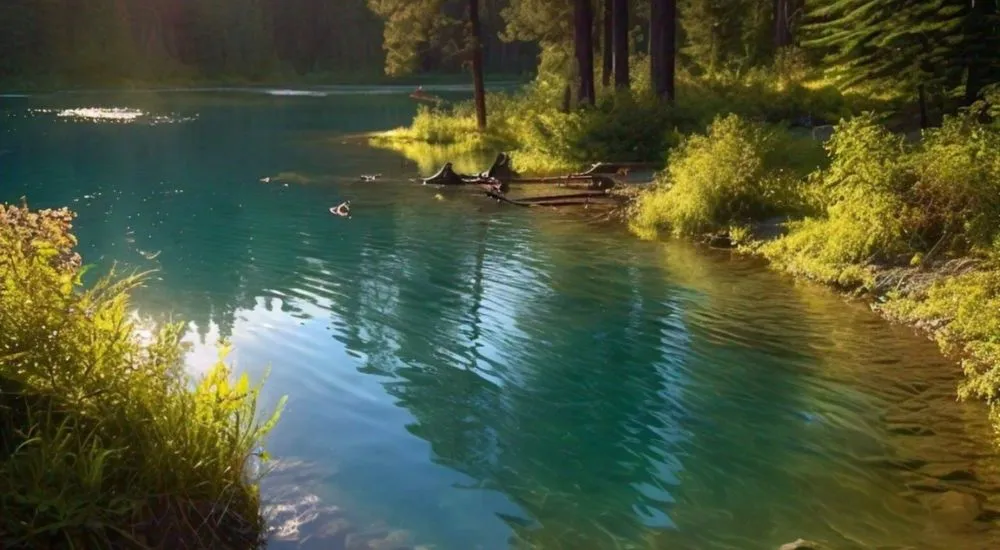The Earth is the third planet from the Sun and the only known place in the universe that supports life. Covered mostly by water, this blue planet has a diverse landscape with oceans, mountains, forests, and deserts. It has a protective atmosphere that shields us from harmful solar radiation and helps regulate the climate. The planet Earth orbits the Sun once every 365 days, creating our year, and rotates on its axis every 24 hours, giving us day and night. With a rich ecosystem and a delicate balance of air, water, and land, Earth is a truly unique and vibrant planet in our solar system.
Some important multiple-choice questions related to earth facts are listed below. Try to answer these questions after reading enough in this topic. Also tie your answer with the given one. This practice may help you sharpen your preparation for any competitive exam along with increase your knowledge in this topic.
1. The Earth is the _______ largest planet in the solar system
(A) Third
(B) Fourth
(C) Fifth
(D) Seventh
(C) Fifth
Explanation: Earth is the largest of the inner planets, and the fifth largest planet of our solar system.
2. Which of the following best describes the shape of the Earth?
(A) Perfect sphere
(B) Oblate spheroid
(C) Flat disk
(D) Prolate spheroid
(B) Oblate spheroid
Explanation: Earth is an oblate spheroid, meaning it is slightly flattened at the poles and bulging at the equator due to its rotation.
3. What percentage of the Earth’s surface is covered by water?
(A) 50%
(B) 61%
(C) 71%
(D) 80%
(C) 71%
Explanation: Approximately 71% of Earth’s surface is covered by water, including oceans, seas, lakes, and rivers.
4. Our mother Earth is also known as
(A) Green planet
(B) Blue planet
(C) Red planet
(D) Gray planet
(B) Blue planet
Explanation: Earth is called the “Blue Planet” because about 71% of its surface is covered by water, primarily in the form of oceans. The vast amount of water gives Earth its distinctive blue appearance when viewed from space.
5. Approximately how long does it take for sunlight to reach the Earth?
(A) 1 second
(B) 8 minutes
(C) 30 minutes
(D) 1 hour
(B) 8 minutes
Explanation: It takes approximately 8 minutes and 20 seconds for sunlight to travel from the Sun to Earth, covering the distance of about 149.6 million km (93 million miles).
6. How long does it take for the Earth to complete one full rotation on its axis?
(A) 24 hours
(B) 12 hours
(C) 30 hours
(D) 365.25 days
(A) 24 hours
Explanation: Earth takes approximately 24 hours to complete one full rotation on its axis, which defines the length of a day. This rotation is responsible for the cycle of day and night.
7. How long does it take for the planet Earth to complete one full revolution around the Sun?
(A) 24 hours
(B) 30 days
(C) 365.25 days
(D) 730 days
(C) 365.25 days
Explanation: It takes Earth approximately 365.25 days to complete one full revolution around the Sun. The extra 0.25 days accumulate over four years, leading to the addition of a leap day every fourth year, making that year 366 days long.
8. Earth’s axis of rotation is tilted relative to the orbital axis at an angle of
(A) 0 degrees
(B) 15.5 degrees
(C) 23.5 degrees
(D) 45 degrees
(C) 23.5 degrees
Explanation: Earth’s axis of rotation is tilted at an angle of approximately 23.5 degrees relative to its orbit around the Sun. This tilt is responsible for the changing seasons as Earth orbits the Sun.
9. What is the term for the point in Earth’s orbit when it is closest to the Sun?
(A) Aphelion
(B) Perihelion
(C) Equinox
(D) Solstice
(B) Perihelion
Explanation: Perihelion is the point in Earth’s elliptical orbit where it is closest to the Sun. This occurs around early January each year. Conversely, the point where Earth is farthest from the Sun is called aphelion.
10. What is the term for the point in Earth’s orbit when it is farthest from the Sun?
(A) Aphelion
(B) Perihelion
(C) Equinox
(D) Solstice
(A) Aphelion
Explanation: Aphelion is the point in Earth’s elliptical orbit where it is farthest from the Sun. This typically occurs around early July, when Earth is about 152 million kilometers (about 94.5 million miles) from the Sun.
11. What is the highest point on Earth?
(A) Mount Everest
(B) K2
(C) Mount Kilimanjaro
(D) Denali
(A) Mount Everest
Explanation: Mount Everest, located in the Himalayas, is the highest point on Earth, with a peak at 8,848 meters (29,029 feet) above sea level.
12. The largest ocean on the Earth is
(A) Atlantic Ocean
(B) Indian Ocean
(C) Arctic Ocean
(D) Pacific Ocean
(D) Pacific Ocean
Explanation: The Pacific Ocean is the largest and deepest ocean on Earth, covering more than 63 million square miles and containing more than half of the world’s ocean water.
13. What is the deepest part of the world’s oceans?
(A) Mariana Trench
(B) Tonga Trench
(C) Java Trench
(D) Philippine Trench
(A) Mariana Trench
Explanation: The Mariana Trench, located in the western Pacific Ocean, is the deepest part of the world’s oceans, reaching a maximum depth of about 36,000 feet (11,000 meters) at the Challenger Deep.
14. Which planet is closest to Earth?
(A) Mars
(B) Venus
(C) Mercury
(D) Jupiter
(B) Venus
Explanation: Venus is the closest planet to Earth in terms of average distance. Although Mercury occasionally gets closer to Earth during its orbit, Venus is typically the nearest planet to us.
15. Which gas is the most abundant in Earth’s atmosphere?
(A) Oxygen
(B) Carbon dioxide
(C) Nitrogen
(D) Hydrogen
(C) Nitrogen
Explanation: Nitrogen makes up about 78% of Earth’s atmosphere, making it the most abundant gas. Oxygen is the second most abundant at about 21%.
16. What is the most abundant mineral in Earth’s crust?
(A) Quartz
(B) Feldspar
(C) Mica
(D) Calcite
(B) Feldspar
Explanation: Feldspar is the most abundant mineral in Earth’s crust, making up about 41% of it. It is a group of rock-forming minerals found in many types of rocks.
17. What is the most abundant metal in Earth’s crust?
(A) Iron
(B) Copper
(C) Aluminium
(D) Silicon
(C) Aluminium
Explanation: Aluminium is the most abundant metal in Earth’s crust, constituting about 8% of the Earth’s solid surface. It is primarily found in the mineral bauxite.
18. What is the main component of Earth’s core?
(A) Silicon
(B) Aluminium
(C) Iron
(D) Carbon
(C) Iron
Explanation: Earth’s core is primarily composed of iron, along with some nickel. The inner core is solid, while the outer core is molten, generating Earth’s magnetic field.
19. What is Earth’s only natural satellite?
(A) Mars
(B) The Moon
(C) Titan
(D) Europa
(B) The Moon
Explanation: The Moon is Earth’s only natural satellite. It orbits the Earth and is the fifth largest moon in the Solar System. The Moon plays a crucial role in affecting Earth’s tides and has been the subject of human exploration.
20. What is the estimated age of the Earth?
(A) 3.5 billion years
(B) 4.5 billion years
(C) 5.5 billion years
(D) 6.5 billion years
(B) 4.5 billion years
Explanation: Scientists estimate the age of the Earth to be approximately 4.5 billion years based on radiometric dating of rocks and meteorites.











2 Comments
I have been browsing online more than 2 hours today, yet I never found any interesting article like yours.
It is pretty worth enough for me. In my view, if all webmasters and bloggers
made good content as you did, the internet will be much more useful
than ever before.
Thank you Marticka Jandova. This type of positive comments is the source of inspiration for me. Be with us to get more useful content like this.